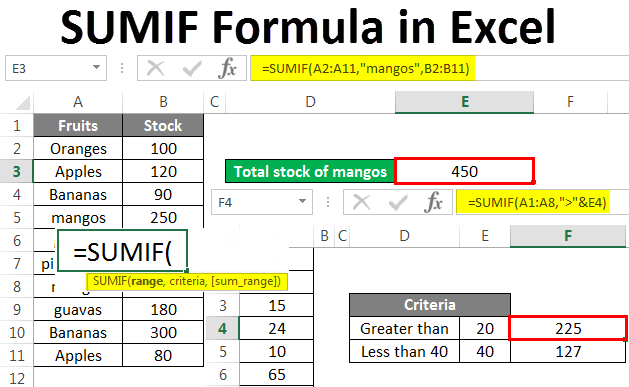
Now, let's define the arguments for our SUMIF formula: You want to know the sum of all amounts relating to a given product, e.g. Suppose you have a list of products in column A and corresponding amounts in column C. To illustrate the Excel SUMIF syntax better, let's consider the following example.

If the sum_range argument is omitted, Excel will sum the same cells to which the criteria is applied (i.e. This argument is optional, and you need to use it only if you want to sum cells other than defined in the range argument. sum_range - the cells to sum if the condition is met.For numerical criteria, double quotation marks are not required. Please pay attention that any text criteria or criteria containing mathematical symbols must be enclosed in double quotation marks ("). So, the syntax of the SUMIF function is as follows: If you've happened to read the COUNTIF tutorial on this blog, you won't have any difficulties with understanding Excel SUMIF because its syntax and usage is analogous. The SUMIF function, also known as Excel conditional sum, is used to add cells based on a certain condition, or criteria. Why isn't my SUMIF formula working correctly?.Sum cells that correspond to non-empty cells.Sum cells that correspond to empty cells.Sum the largest or smallest numbers in a range.SUMIF examples with wildcard characters.Using comparison operators with cell references.Excel SUMIF formulas with text criteria.



 0 kommentar(er)
0 kommentar(er)
